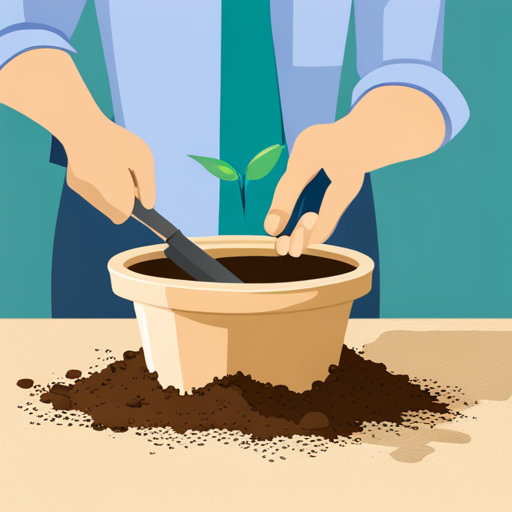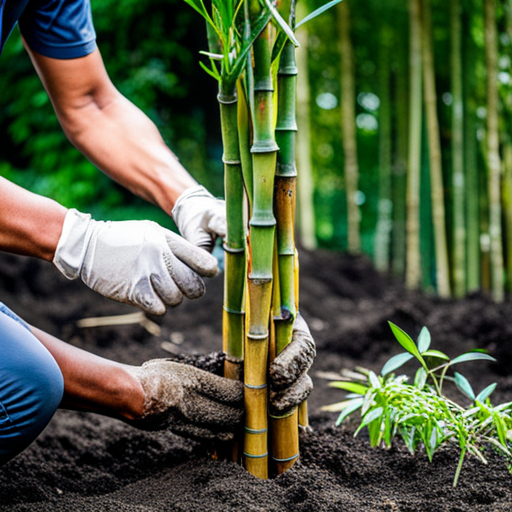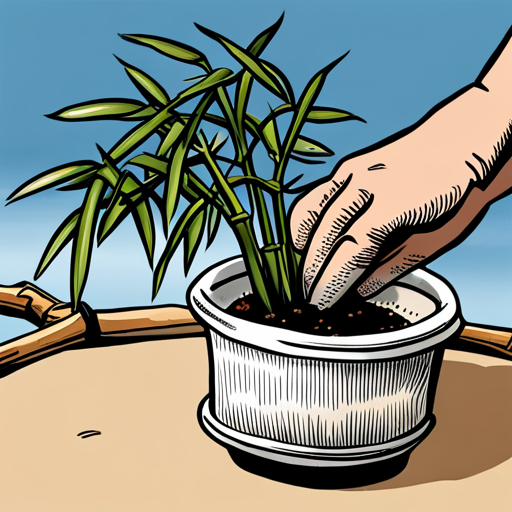This article provides a comprehensive guide on how to transplant bamboo effectively. Beginning with the ideal timing, early spring or late fall, and emphasizing the importance of a cloudy, misty day, the article outlines the necessary tools and techniques for successful transplantation.
It highlights the significance of well-drained soil with the appropriate pH level, the use of compost and amendments, and the utilization of root barriers for running bamboo species. Additionally, the article addresses the importance of maintaining moisture in the root ball and watering newly planted bamboo.
It also provides insights into fertilization, watering frequency, and selecting the right bamboo species. Lastly, it offers guidance on addressing root-bound bamboo and potted bamboo maintenance. By following these guidelines, readers will be equipped with the knowledge and skills required to transplant bamboo effectively, ensuring the vitality and longevity of this remarkable plant.
Contents
- 1 Our Highlighted Points
- 2 Steps for Transplanting Bamboo
- 3 Preparation and Timing
- 4 Transplanting Techniques
- 5 Is It Safe to Transplant Bamboo After Burning It?
- 6 Frequently Asked Questions
- 6.1 What are the different methods of propagating bamboo other than planting a short length of stalk?
- 6.2 How long does it typically take for a transplanted bamboo to establish and start growing?
- 6.3 Can bamboo be transplanted during the summer months?
- 6.4 Are there any special considerations for transplanting bamboo in containers or pots?
- 6.5 How can I prevent the spread of running bamboo and control its growth?
Our Highlighted Points
- Transplanting bamboo should be done in early spring or late fall on a cloudy, misty day.
- Preparation for transplanting bamboo includes removing grass, weeds, and unwanted plants from the planting area and adding compost and amendments to the soil.
- Bamboo requires bright, indirect light and well-drained soil with a pH of 6 to 6.5.
Steps for Transplanting Bamboo

One important aspect of transplanting bamboo is to divide existing clumps and replant them, which can be done in early spring or late fall. Transplanting bamboo offers several benefits, including rejuvenating older plants, controlling the spread of running bamboo, and creating new bamboo groves.
However, there are common mistakes that should be avoided during the transplanting process. One mistake is not properly preparing the planting area by removing grass, weeds, and unwanted plants. Another mistake is neglecting to add compost and amendments to improve the soil quality.
It is also important to choose the right bamboo species and age for transplantation, as younger plants may not establish as well. Additionally, it is crucial to provide proper care and maintenance to ensure the successful growth of transplanted bamboo.
Preparation and Timing

To ensure successful transplantation, it is important to prepare the planting area by removing unwanted vegetation and improving the soil with compost and amendments. Before transplanting bamboo, it is crucial to select the right tools for the job. A sharp spade, ax, and saw are necessary to divide the existing clumps and replant them. These tools will allow for precise cutting and digging, ensuring minimal damage to the bamboo plants.
Additionally, preparing the soil is essential for the growth and health of the transplanted bamboo. This involves removing grass, weeds, and any unwanted plants from the planting area. Adding compost and amendments to the soil will improve its fertility and drainage, providing a suitable environment for bamboo growth. Taking these steps will help create optimal conditions for successful bamboo transplantation.
Transplanting Techniques

An effective technique for transplanting bamboo involves carefully dividing the existing clumps and replanting them in a prepared and fertile soil, ensuring minimal damage to the plants.
To successfully transplant bamboo, several tools are needed, including a sharp spade, ax, and saw. These tools are essential for cutting through the thick and fibrous roots of bamboo. However, it is important to avoid common mistakes in transplanting bamboo, such as using inadequate tools that may cause unnecessary damage to the plants.
Additionally, it is crucial to handle the bamboo clumps with care to prevent breakage or separation of the rhizomes.
By using proper tools and techniques, transplanting bamboo can be done effectively, allowing the plants to thrive in their new location.
Is It Safe to Transplant Bamboo After Burning It?
Transplanting bamboo after burning it may not be safe. The intense heat from burning bamboo can cause damage to the plant’s root system. The roots may become weakened or even die, making it difficult for the bamboo to survive transplantation. It is advisable to avoid burning bamboo if you intend to transplant it successfully.
Frequently Asked Questions
What are the different methods of propagating bamboo other than planting a short length of stalk?
Different methods of bamboo propagation include root division, rhizome cuttings, and tissue culture. Root division involves separating bamboo clumps into smaller sections, which promotes new growth and increases the number of plants. This method ensures genetic diversity and helps maintain the health of the bamboo population.
How long does it typically take for a transplanted bamboo to establish and start growing?
Transplanted bamboo typically takes about 3 to 6 months to establish and start growing. The growth rate of bamboo can vary depending on the species and environmental conditions, but it is generally fast, with some species capable of growing up to 3 feet in a single day.
Can bamboo be transplanted during the summer months?
Bamboo can be transplanted during the summer months in hot climates, but it is generally recommended to transplant it in early spring or late fall. These seasons provide more favorable conditions for the plant’s establishment and growth.
Are there any special considerations for transplanting bamboo in containers or pots?
Special considerations for transplanting bamboo in containers or pots include choosing the appropriate container size to accommodate the plant’s growth, using a well-drained potting mix to ensure proper soil requirements, and periodically repotting to prevent root binding.
How can I prevent the spread of running bamboo and control its growth?
Preventing the spread and controlling the growth of running bamboo can be achieved by installing a root barrier to contain the rhizomes. Regularly monitoring and trimming the rhizomes can help prevent their spread and maintain control over the growth of the bamboo.

